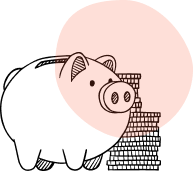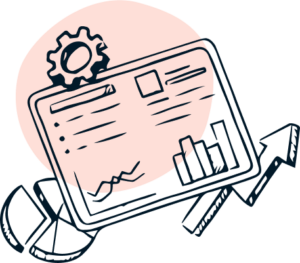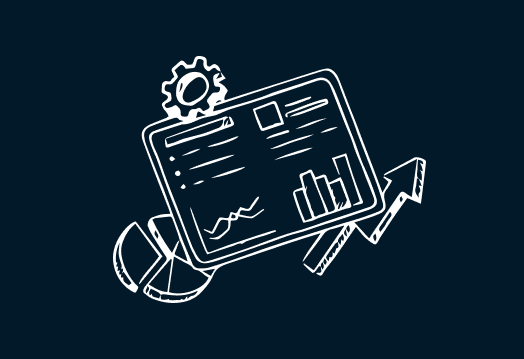How you pay down debt is a crucial step toward financial freedom, and it’s one of the most powerful tools for accelerating wealth growth.
If you’re looking to secure a prosperous retirement and create an investment portfolio that works for you, then eliminating your debt as efficiently as possible should be a top priority.
In this blog post, we’ll explore some effective strategies to help you pay down debt more quickly and free up more money for growing your investment-grade assets. These steps will set you on a path to a more secure financial future and help you build wealth over time.

Understand the Terms of Your Loan
One of the first steps in effective debt reduction is thoroughly understanding the terms of your loan. Many people overlook this aspect, leading to costly mistakes. Every loan has specific repayment terms, such as interest rates, fees, and penalties for early repayments.
Some loans charge fees if you repay too quickly or in ways that do not align with the terms of the loan. These unexpected costs can add up and impact your ability to reduce debt efficiently.
Before implementing any repayment strategy, review your loan agreements and understand the following:
Interest rates (fixed or variable) – fixed rates will limit what you can repay in advance.
Loan fees (late payments, early repayment penalties) – know the detail, it will save you in the long run.
Repayment flexibility (weekly, bi-weekly, or monthly options) – be sure you can make additional repayments without penalty.
By ensuring that your repayment efforts don’t incur additional costs, you can streamline your debt reduction strategy without unnecessary setbacks.
Know Your Loan-to-Value Ratio (LVR)
Another essential tip for accelerating your debt reduction efforts is knowing your Loan-to-Value Ratio (LVR).
This ratio is a measure of the size of your loan compared to the value of the asset it’s tied to, such as a property. A high LVR means that you have borrowed a large portion of the asset’s value, which can put you in a risky position if the value of the asset decreases.
Focusing on reducing loans with higher LVRs first can bring your finances to a more manageable and secure level. Here’s why:
Increased equity: As you pay down loans with higher LVRs, you build equity in the asset. This equity acts as a financial buffer, protecting you in case of market downturns or economic instability. It will also provide opportunity to leapfrog into more assets if this is an appropriate part of your strategy.
Lower risk: A lower LVR reduces the risk of being overleveraged, giving you more control and flexibility in your investment strategy. The lower the LVR the less likely the bank will intervene in your loan, that is, their risk is lowered and so they are more comfortable.
By focusing on lowering your LVR, you’re not only reducing debt but also increasing the security of your investments, providing greater long-term stability.

Negotiate a Better Rate with Your Bank
When it comes to debt reduction, every percentage point of interest saved can make a significant difference over time.
Many people are unaware that banks are often willing to negotiate interest rates to retain your business. Banks make money from the margin they add on top of the base interest rate, and there is often some room for negotiation.
Here’s how to approach it:
Do your research: Understand what other lenders are offering in terms of interest rates and fees. You can use this information as leverage during negotiations.
Show your loyalty: If you’ve been a long-term customer with a good repayment history, make that clear. Banks value reliable customers and are often willing to make adjustments to keep them.
Be prepared to switch: Sometimes, simply showing that you’re willing to move to another lender can motivate your bank to offer a better deal.
By lowering your interest rate, you’ll not only reduce the total cost of the loan but also free up more cash flow that can be directed towards faster debt repayment or investment growth.
A simlpe reduction in your rate of 0.5% can eliminate more than 5 years from your loan term and tens of thousands of repayments, if not more, depending on the size of your loan.
Pay Down Debt – Make More Frequent and Additional Payments
One of the simplest yet most effective strategies for debt reduction is increasing the frequency of your payments.
Many people stick to a monthly repayment schedule, but by shifting to weekly or fortnightly payments, you can reduce your interest costs and pay down debt more quickly.
This is because interest is usually calculated daily, so the more often you reduce your principal, the less interest accrues.
For example, if your loan is structured on a monthly repayment schedule, you could:
Switch to bi-weekly payments: By making half of your monthly payment every two weeks, you’ll effectively make one extra payment each year, which can significantly reduce your loan term and interest costs.
Make additional payments: Whenever possible, make extra payments toward your loan. Whether it’s a small amount each week or a lump sum from a tax refund, bonuses, or overtime pay, every little bit helps.
The extra payments directly reduce the loan principal, which means you pay less interest over time and become debt-free faster.

Utilise Bonuses, Tax Refunds, and Claim All Eligible Deductions
When working towards debt reduction, it’s essential to take advantage of any financial windfalls and deductions to boost your repayment efforts. These additional funds can make a significant dent in your outstanding debt if used wisely.
Apply bonuses and tax refunds: Instead of spending bonuses, overtime pay, or tax refunds, direct them toward your loans. These lump sum payments can help reduce your principal quickly and shorten your loan term.
Claim eligible deductions: If your debt is linked to an investment, such as a property, ensure you’re claiming all eligible deductions, such as depreciation and maintenance costs. By maximising your tax return, you’ll have more funds to apply towards debt reduction.
Incorporating these additional sources of income can give your debt repayment plan the boost it needs to accelerate progress.
Prioritize Non-Investment Debt First
When focusing on debt reduction, it’s crucial to prioritise non-investing debt before tackling loans tied to your investments.
Non-investing debt, such as personal loans, credit cards, or car loans, typically carries higher interest rates and doesn’t generate any income for you. By eliminating this type of debt first, you free up more cash to direct toward your investment-grade assets.
Once your non-investing debt is under control, you can then focus on using the returns from your investments to pay down your investing debt. As your assets grow and generate income, you can apply these earnings toward debt repayment, moving closer to a debt-free portfolio of income-producing assets.
While negative gearing is a popular strategy, the most misunderstood part about it is that over time you need to ensure that you are growing the net income from your asset. This means you need to reduce debt and increase the income from the asset so that by the time you reach your retirement age the income is maxmised. This income is what you want to use to fund your lifestyle, so negative gearing needs to be a short term startegy only.
Key Takeaways: Freeing Yourself from Debt to Grow Wealth
Debt reduction is essential for growing wealth and achieving financial security, especially as you prepare for retirement. By following these steps, you can take control of your debt and create more financial freedom to invest in income-generating assets:
- Understand your loan terms to avoid unnecessary fees.
- Focus on reducing your loan-to-value ratio to build equity and reduce risk.
- Negotiate a better interest rate with your bank to lower costs.
- Make more frequent and additional payments to speed up debt repayment.
- Use bonuses, tax refunds, and deductions to accelerate your progress.
- Prioritise non-investing debt before using investment returns to pay down investing debt.
The sooner you eliminate debt, the sooner you can redirect your cash flow toward building wealth. The more debt you pay down, the more money you’ll have available to invest, and ultimately, the closer you’ll get to financial independence and a secure retirement.
By implementing these debt reduction strategies, you’ll be on your way to a debt-free lifestyle supported by a strong portfolio of investment assets.
To schedule a Smart Investor Call and start the journey to plan your financial future, click the link here to find a time that works for you.

